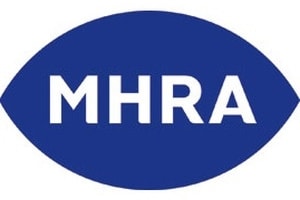
The latest annual report from the Medicines and Healthcare products Regulatory Agency focuses on three key areas: investigating published advertising, pre-vetting materials, and working with others.
Investigating published advertising
The MHRA received 283 complaints in 2013, an increase from 2012’s 237, but some way short of 2011’s 357.
Of the complaints received in 2013, 272 prompted investigations, and 6 were referred to other (ie non-advertising-focused) MHRA units. Four complaints referred to matters already under MHRA investigation, while a further one was being investigated by other bodies.
Consistent with previous years, said the MHRA, a significant proportion of complaints referred to the advertising of botulinum toxin products and other POMs (prescription-only medicines) to the public.
The increase was largely prompted by complaints made by a single campaigning organisation against the advertising of homeopathic products, said the MHRA in its report.
There was also a significant increase in the number of complaints around advertising on social media, in particular on Facebook, although 2013 saw the MHRA receive its first Twitter complaints.
Vetting materials pre-publication
The agency continues to focus on prior vetting, said Dr June Raine, director of vigilance and risk management of medicines, discussing the report at a seminar this week.
The bulk of products vetted by the MHRA were ‘new active substances’, which accounted for 67 per cent of vettings. The next biggest category was ‘reclassifications’, accounting for 19 per cent.
The MHRA vetted advertising for 40 new active substances in 2013, suggesting that launches of new active substances have returned to normal after the previous year’s dip. Launch advertising vetted in 2013 included treatments for sufferers of breast cancer, HIV and multiple sclerosis, among others.
No serious breaches of advertising legislation were detected in 2013. This was also the case in 2012, and the MHRA attributed the improvement to ‘a better understanding of the requirements for promotional material as well as the effect of the vetting process itself’.
Response times also improved in 2013. The five working days target was met 97 per cent of the time, up from 93 per cent in 2012.
Working with others
The MHRA continued to work closely with the likes of MALG (the Medicines Advertising Liaison Group) and the PMCPA (Prescription Medicines Code of Practice Authority) in 2013, it reported.
The agency was fully consulted during the updating of the ABPI (The Association of the British Pharmaceutical Industry) Code of Practice for the Pharmaceutical Industry, welcoming the changes to the Code.
The MHRA continued to vet the European Forum on Advertising Regulation (FOAM), hosting a second annual meeting in London in November 2013. Fifteen member countries attended and, for the first time, a representative of the Canadian regulatory authority took part.
Looking ahead
This has been a year of change, emphasised the MHRA, which merged with the National Institute of Biological Standards and Control (NIBSC) in April 2013.
The agency said that it would ‘continue to work to ensure that medicines advertising regulation is proportionate and effective and that clear guidance is available on compliance with the legislation’.




